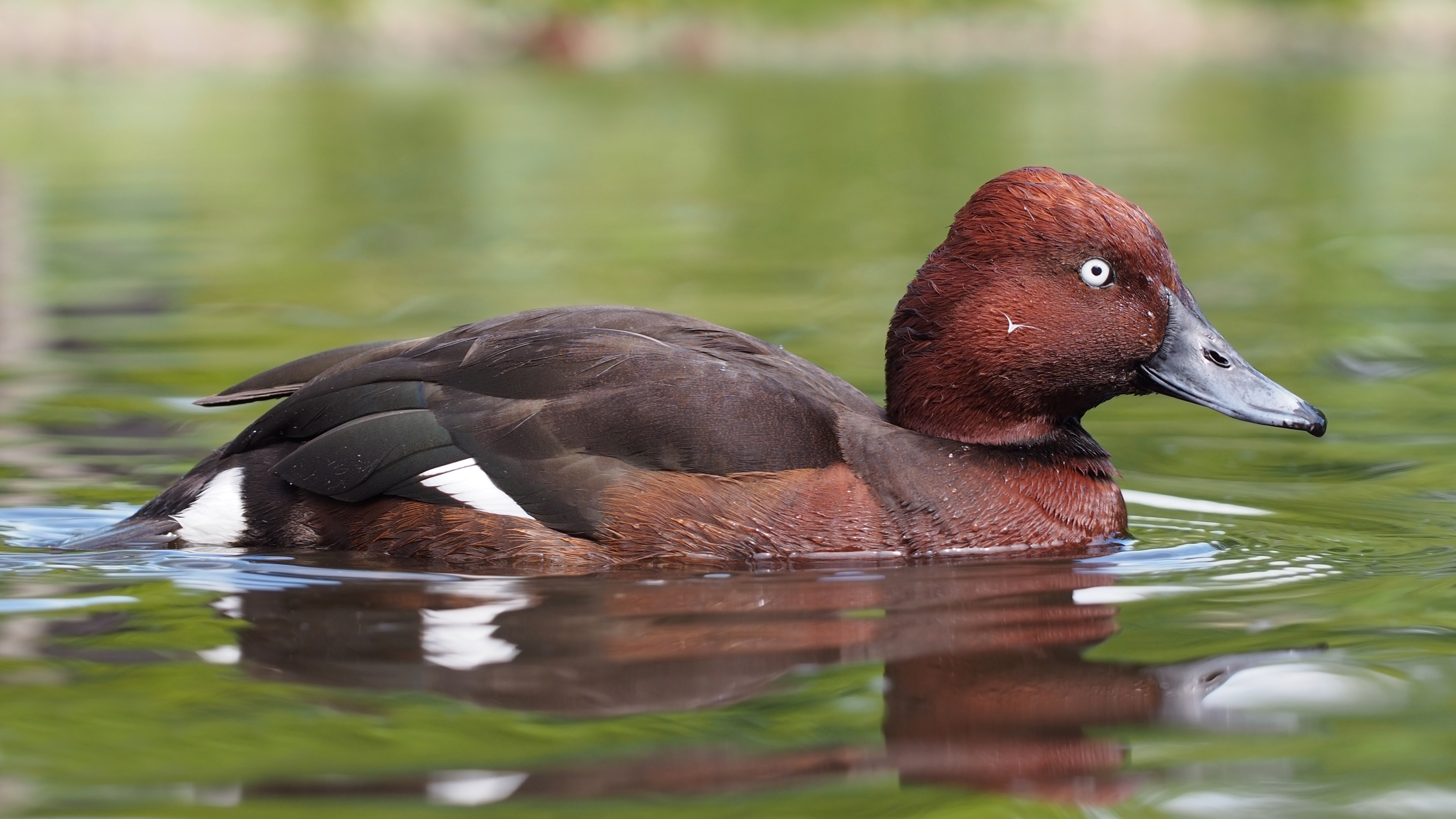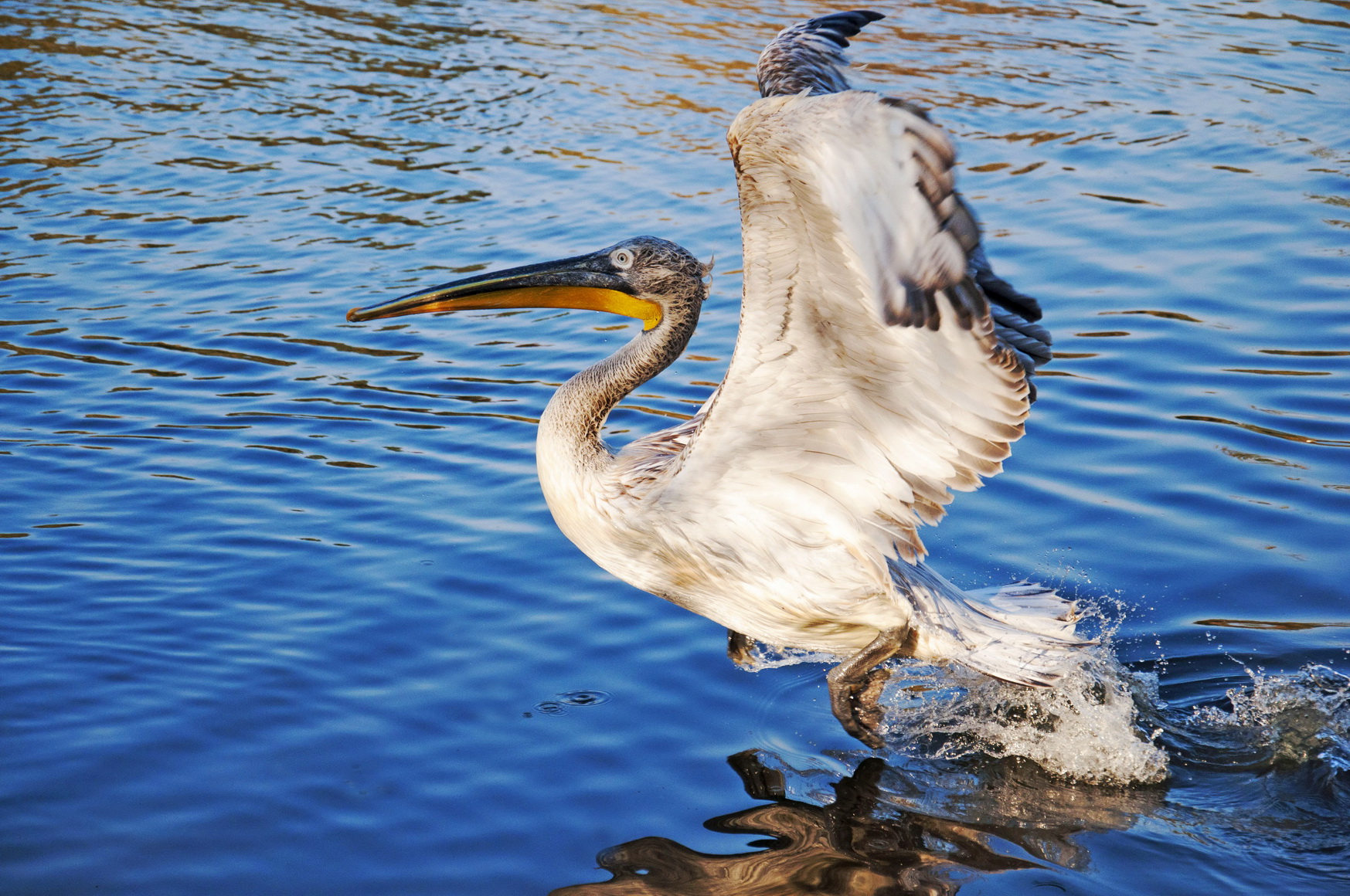Emin Valley Steppe
The ecoregion’s land area is provided in units of 1,000 hectares. The conservation target is the Global Safety Net (GSN1) area for the given ecoregion. The protection level indicates the percentage of the GSN goal that is currently protected on a scale of 0-10. N/A means data is not available at this time.
Bioregion: Altai Mountains & Ermin Valley (PA37)
Realm: Central Eurasia
Ecoregion Size (1000 ha):
6,512
Ecoregion ID:
728
Conservation Target:
54%
Protection Level:
3
States: China, Kazakhstan
The Emin Valley Steppe ecoregion straddles the Kazakhstan-China border along the north slope of the Tian Shan mountain range. On the Kazakhstan side, the Alakol depression holds a system of saline lakes that provide nesting habitat for the Dalmatian pelican, relict gull, and more than 200 other bird species. About half of these are water birds, and more than 20 species are rare and endangered. On the China side, the Emin Valley Steppe habitat links eastward via a fault-bounded valley to the Junggar Basin.

The flagship species of the Emin Valley Steppe ecoregion is the Ferruginous duck. Image credit: Francis Franklin, Creative Commons
The ecoregion has a continental climate with extreme seasonal temperatures. Winters are long and cold with snow cover lasting from 50 to 150 days depending on the region, while summers are short hot and dry with an annual precipitation varying from less than 100 mm to 400 mm. Average temperature ranges in the north are from -18°C in January to 19°C in July, while in the south it ranges from -3°C in January to 30°C. Montane steppe predominates the ecoregion. Shrub-grassland steppe extends up to 2,000 m elevation and then transitions to alpine steppe-meadow. Like so much of Central Asia, the dominant grass taxa are Stipa feather grass and Festuca, a tufted, perennial grass.
The western end of the Emin Valley Steppe ecoregion is the most biologically distinctive part. Here, an enclosed basin holds two large and many small lakes of varying salinity. Alakol and Sasakol, the two largest lakes, both saline, are joined by expansive beds of the reed-forming, salt-adapted perennial grass Phragmites.
Lake Alakol has several small, low islands that provide important breeding ground for wetland birds. In total, the lakes and their surrounding wetlands cover 6,000 km2, of which 1,930 km2 lies within Lake Alakol Biosphere Reserve. The region has also been nominated under the RAMSAR convention as a wetland of international importance.

Saiga antelope. Image credit: Andrey Giljov, Creative Commons
The Alakol depression in southeastern Kazakhstan is part of an important migratory bird pathway between Central Asia and India. Dalmatian pelican, a charismatic resident of the Emin Valley Steppe ecoregion, is one of the largest of all flying birds with an average weight of 10-11 kg and a wingspan that approaches 3.5 m. Eurasian spoonbill and greater flamingo also nest here.
Relict gull is a globally threatened species that breeds on islands in the saltwater lakes of Alakol Depression. Individual relict gulls that breed here have been sighted as well in Southeast Asia and Central Europe.
Baluk (Ba’erluke) Mountain National Nature Reserve in the China part of the ecoregion protects an 8 km2 forest that contains the endangered wild apricot Armeniaca vulgaris. These stands are isolated about 300 km north of better-known stands, and the Emin Valley population is not well documented.
Wild apple Malus sieversii is reported to grow here as well, although the better-known stands of wild apple occur in the Kazakhstan Tian Shan range to the southwest. Other plants of conservation significance include two species of wild tulip from the western part of the ecoregion.

Dalmation pelican. Image credit: Janetta Bagadjian, Creative Commons
Emin Valley Steppe holds potential habitat for several mammal species of conservation significance, but the mountain enclaves in this border region remain poorly investigated. Snow leopard is reported from Baluk Mountain in China, but confirmation awaits; the critically endangered Saiga antelope once occurred on the steppes of this ecoregion but have been extirpated. Large mammals known to occur include black-tailed gazelle and marbled polecat, a member of the weasel family.
The near-threatened ferruginous duck, which breeds in Alakol Biosphere Reserve of this ecoregion, requires abundant floating and submerged aquatic vegetation and dense stands of emergent vegetation like rushes along water margin. They are threatened by drought and habitat loss. Little bustard breeds among steppe vegetation of the Tarbagatai Mountains on the northern side of the Alakol Depression.
The main threat to this ecoregion is mineral extraction. Oil, coal, iron ore, manganese, chromite, lead, zinc, copper, titanium, bauxite, gold, silver, phosphates, sulfur, iron, and steel are mined from this area and the consequent contamination and destruction of habitat is of serious concern.
Priority conservation actions for the next decade
- Take active steps to conserve and reduce mortality to Dalmatian pelicans by constructing nesting platforms and protecting birds from the expanding power line grid.
- Investigate the distribution of wild mammal populations in the Baluk mountains.
- Conduct more research on the wild apricot, wild apple, and other plant genetic resources of this ecoregion.
-
-
- Carpenter, C. 2000. Emin Valley Steppe. https://www.worldwildlife.org/ecoregions/pa0806#. Accessed December 2018.
- Kazakhstan National Committee Man and Biosphere. 2013. Alakol Biosphere Reserve. http://www.kazmab.kz/index.php/en/biosphere-reserves/2016-01-25-13-17-07/alakol/description. Accessed December 2018.
- Xinjiang Ba’erluke National Nature Reserve (in Chinese). https://baike.baidu.com/item/新疆巴尔鲁克山国家级自然保护区. Accessed December 2018.
-
Cite this page: Emin Valley Steppe. Ecoregion Snapshots: Descriptive Abstracts of the Terrestrial Ecoregions of the World, 2021. Developed by One Earth and RESOLVE. https://www.oneearth.org/ecoregions/emin-valley-steppe/
-




